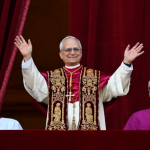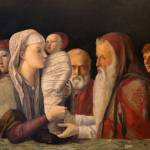Gregory of Nyssa, one of the Fathers of the ancient church, once described marriage as a form of philanthropy (philanthropia) and a liturgical work, in that it constitutes a service to the public. In a similar vein, Catholic moral theologians such as Paul Quay, William E. May, Ronald Lawler and Joseph Boyle maintain that marriage is a public institution and not merely a private contract. The proof of the publicness of marriage, they maintain is in the flesh of a child born within that marriage.
In spite of the physical weakness of the child its mere presence bears a great power in redirecting the focus of parents in an outward, public direction. The directing of one’s resources towards objects other than oneself that is exemplified in philanthropia and leitourgia is played out in microcosm through the subordination of the wants of the parent to the needs of the child. At the same time, the life of the child becomes the bridge between the parent’s private life and the life of other elements within society.
An indicator of these points can be seen in a recent reflection in Mail Online by Martin Daubney, who made a name for himself as the longest serving editor of the soft-porn magazine Loaded. Previously revelling in the luxurious lifestyle made possible by the porn industry, the arrival of Daubney’s first child became the focal point that pierced through a seemingly impenetrable wall of privacy, bringing about the very personal reflection, which posits the publicness of marriage as a counterpoint to the sheer privatising force of pornography.















